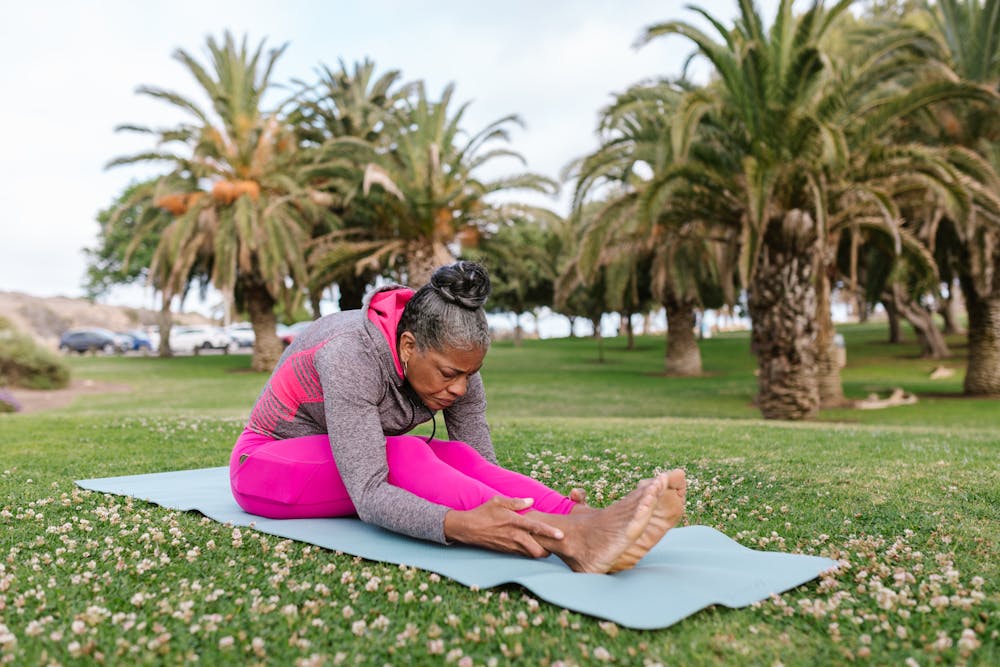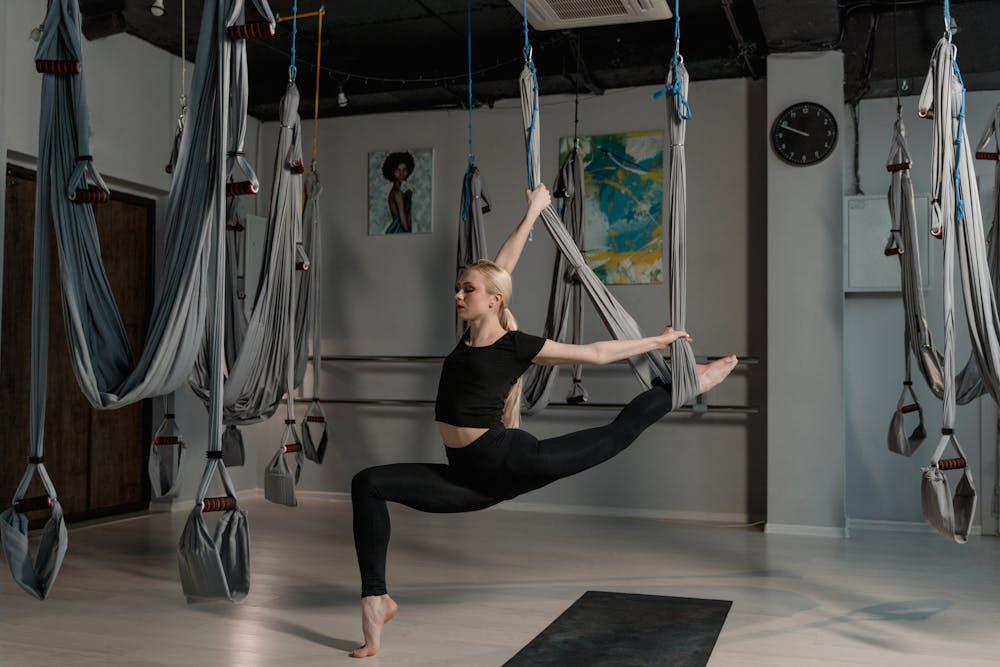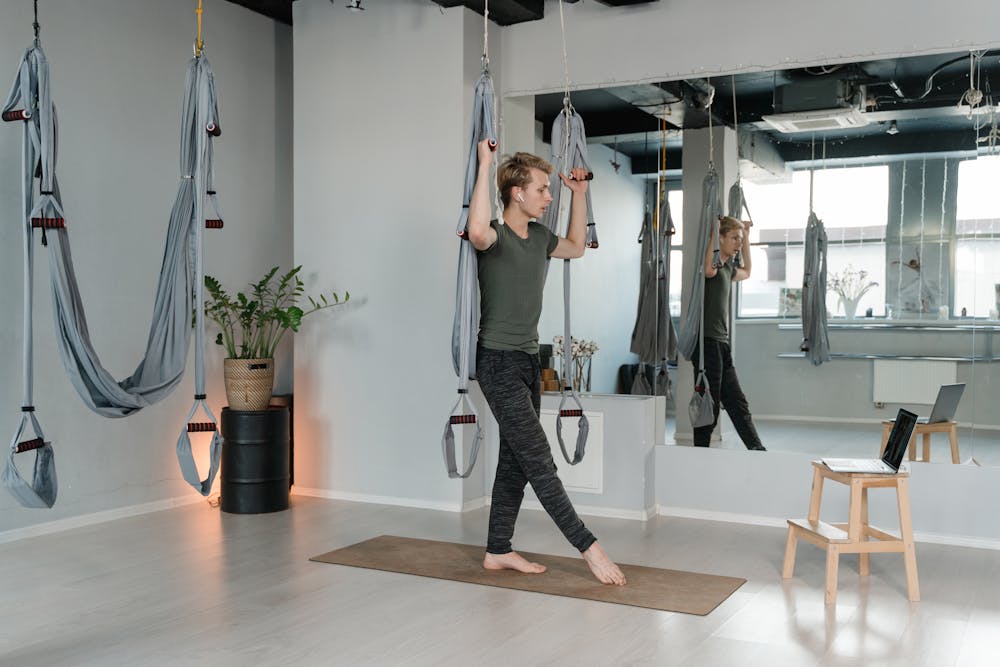Flexibility and mobility have become essential components of my fitness routine, not only for enhancing performance but also for preventing injuries. Over the years, I’ve learned that prioritizing flexibility and mobility not only improves my physical well-being but also enhances my overall quality of life.
 Incorporating flexibility exercises into my routine has been transformative. From dynamic stretches to static holds, I’ve found that improving my flexibility not only increases my range of motion but also reduces muscle tension and stiffness. Whether it’s through yoga, Pilates, or dedicated stretching sessions, I make it a point to dedicate time each day to loosen up tight muscles and improve joint mobility.
Incorporating flexibility exercises into my routine has been transformative. From dynamic stretches to static holds, I’ve found that improving my flexibility not only increases my range of motion but also reduces muscle tension and stiffness. Whether it’s through yoga, Pilates, or dedicated stretching sessions, I make it a point to dedicate time each day to loosen up tight muscles and improve joint mobility.
 But flexibility is just one piece of the puzzle. Mobility – the ability to move freely and efficiently through a full range of motion – is equally important. By focusing on mobility exercises that target specific joints and movement patterns, I’ve been able to address imbalances and asymmetries in my body, reducing the risk of injury and improving overall movement quality.
But flexibility is just one piece of the puzzle. Mobility – the ability to move freely and efficiently through a full range of motion – is equally important. By focusing on mobility exercises that target specific joints and movement patterns, I’ve been able to address imbalances and asymmetries in my body, reducing the risk of injury and improving overall movement quality.
 One of the key benefits of flexibility and mobility training is injury prevention. By improving flexibility, I reduce the likelihood of muscle strains, tears, and other soft tissue injuries that can occur during physical activity. Similarly, by enhancing mobility, I reduce the risk of joint stiffness, immobility, and overuse injuries that can result from poor movement mechanics.
One of the key benefits of flexibility and mobility training is injury prevention. By improving flexibility, I reduce the likelihood of muscle strains, tears, and other soft tissue injuries that can occur during physical activity. Similarly, by enhancing mobility, I reduce the risk of joint stiffness, immobility, and overuse injuries that can result from poor movement mechanics.
 But injury prevention isn’t just about avoiding acute injuries; it’s also about mitigating the risk of chronic conditions and degenerative changes that can occur over time. By maintaining optimal flexibility and mobility, I reduce the wear and tear on my joints, ligaments, and tendons, helping to preserve their health and function well into the future.
But injury prevention isn’t just about avoiding acute injuries; it’s also about mitigating the risk of chronic conditions and degenerative changes that can occur over time. By maintaining optimal flexibility and mobility, I reduce the wear and tear on my joints, ligaments, and tendons, helping to preserve their health and function well into the future.
 In addition to injury prevention, flexibility and mobility training also offer a host of other benefits. Improved posture, better balance, and enhanced athletic performance are just a few of the positive outcomes I’ve experienced as a result of prioritizing flexibility and mobility in my fitness routine.
In addition to injury prevention, flexibility and mobility training also offer a host of other benefits. Improved posture, better balance, and enhanced athletic performance are just a few of the positive outcomes I’ve experienced as a result of prioritizing flexibility and mobility in my fitness routine.
 But perhaps the most significant benefit of all is the sense of empowerment and control that comes from taking ownership of my body and its well-being. By investing time and effort into flexibility and mobility training, I’m able to move more freely, perform better in my workouts, and live life to the fullest without fear of injury holding me back.
But perhaps the most significant benefit of all is the sense of empowerment and control that comes from taking ownership of my body and its well-being. By investing time and effort into flexibility and mobility training, I’m able to move more freely, perform better in my workouts, and live life to the fullest without fear of injury holding me back.
 In conclusion, flexibility and mobility are essential components of a well-rounded fitness routine. By prioritizing flexibility and mobility training, I’ve been able to reduce the risk of injury, improve movement quality, and enhance overall physical performance. Whether it’s through dedicated stretching sessions, mobility drills, or dynamic warm-ups, I’m committed to maintaining optimal flexibility and mobility for a lifetime of health and vitality.
In conclusion, flexibility and mobility are essential components of a well-rounded fitness routine. By prioritizing flexibility and mobility training, I’ve been able to reduce the risk of injury, improve movement quality, and enhance overall physical performance. Whether it’s through dedicated stretching sessions, mobility drills, or dynamic warm-ups, I’m committed to maintaining optimal flexibility and mobility for a lifetime of health and vitality.

